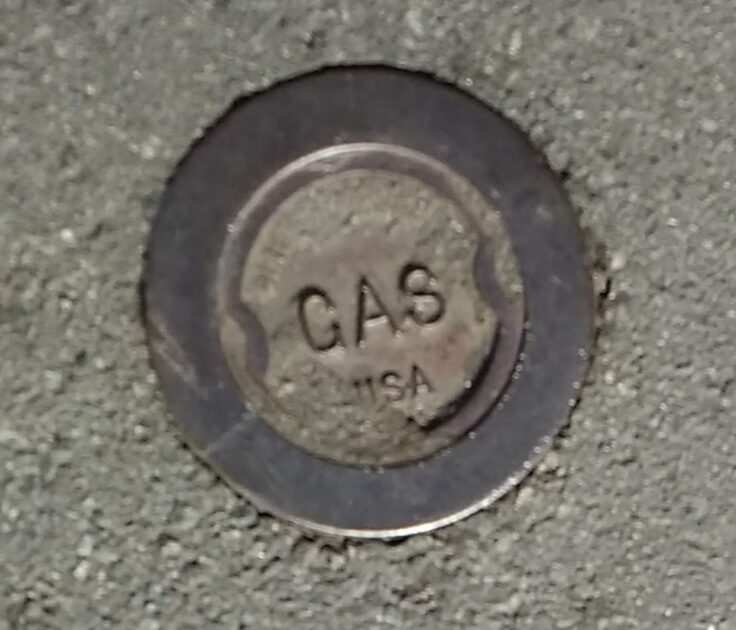Humble Beginnings: The Early History of the Natural Gas System

More than 189 million Americans use natural gas to cook with, heat their homes and water, or fuel other household appliances. We also rely on natural gas for the food on our table, the prescription drugs at our pharmacy and the bulk of goods manufactured in America. Everything from industrial production to crop fertilizers depends on natural gas for affordability and availability.
Today, natural gas is delivered nationwide by a pipeline network with more than 2.7 million miles of pipelines stretching across the United States. This system is the result of well over two centuries of hard work, investment and innovation – and comes from incredibly humble beginnings.
Humans have been finding innovative uses for natural gas for a very, very long time. The first use of pipelines to transport natural gas dates back more than 2,500 years, with the ancient Chinese using bamboo pipes to transport natural gas over many miles for use in homes. This was, of course, small scale use. It took the Industrial Revolution to expose the true value of natural gas.
The Scottish inventor William Murdoch, an employee of James Watt, who discovered the steam engine and for whom the Watt is named, was the first to discover in modern times that natural gas could be transported through metal pipes and used for lighting homes as a substitute for and improvement over candles. Murdoch created the first gas distribution network in Europe, comprised of about 70 feet of copper and iron piping to provide light for his own home in 1792, before doubling his system to light a friend’s home. Proof of concept accomplished, Murdoch brought his system to London, where it was publicly demonstrated in 1802 at a celebration of the signing of the Peace of Amiens treaty between England, France, Spain and Holland.
American business interests were paying attention. Also in 1802, the inventor Benjamin Henfrey of Baltimore, Maryland realized that natural gas could be invaluable for lighthouses and streetlights. Henfrey wrote to then-president Thomas Jefferson to inform him of his proposal, as well as his discovery of a new process to turn coal into natural gas. Over the next decade, small scale demonstration projects – what we would call pilot programs today – became increasingly common across the United States.
As was only appropriate, Baltimore was the first American city to allow a natural gas company to install a delivery system for street lighting, with the scientist Dr. Benjamin Kugler collaborating with Baltimore artist Rembrandt Peale to convince four local businessmen to help organize the Gas Light Company of Baltimore (still in operation and known today as Baltimore Gas and Electric) and working together to petition the Mayor and City Council for the right to install a pipeline network along the city’s streets. The company was formally incorporated in 1817 and commenced service that same year.
Other American cities quickly began to emulate Baltimore, organizing their own natural gas utility companies and working to light their streets with natural gas. Congress seems to have been particularly impressed with natural gas and would arrange for the Washington Gas Light Company (still in operation under the original name) to be given a charter in 1848 as part of an effort to light the Capitol building and grounds with natural gas, including with a six-foot-wide natural gas lantern placed on the Capitol dome itself.
Over the subsequent decades, natural gas lighting would continue to proliferate. While the existence of naturally occurring natural gas had been known for millennia, it was only in the late 1920’s that the true economic potential of natural gas could be unlocked. By 1930, manufacturing technologies and drilling techniques had advanced to the point where it was possible to extract natural gas directly from the ground and to transport it through large diameter steel pipes, enabling affordable and accessible natural gas to reach areas that had previously been unable to take advantage of it.
With access to natural gas assured, new types of natural gas appliances proliferated. Natural gas stoves, boilers, and home heating systems became increasingly common across the United States. As natural gas helped America to become an industrial juggernaut, increasingly prosperous Americans were better able to afford these new natural gas appliances, with demand for natural gas driving local natural gas utilities to continue expanding their pipeline networks to serve a constantly growing customer base. With the ability to transport natural gas through large steel pipes, and with demand fueled by millions of households, the natural gas delivery system began to take on its recognizably modern form.
The natural gas delivery system has continued to expand, innovate, and improve. The progress of the last two centuries is worth celebrating. The advances to come, however, may be even more exciting.
